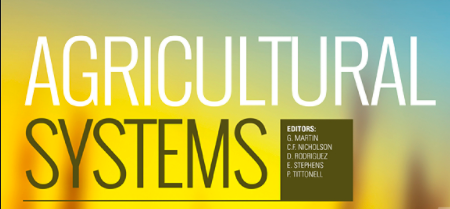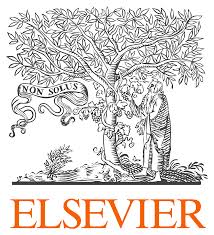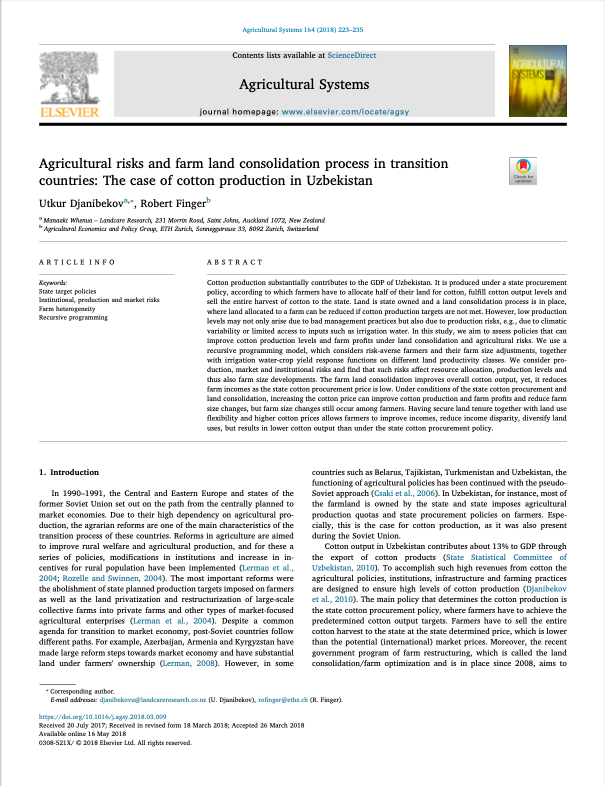Focal point
Location
Agricultural Systems is an international journal that deals with interactions - among the components of agricultural systems, among hierarchical levels of agricultural systems, between agricultural and other land use systems, and between agricultural systems and their natural, social and economic environments. Manuscripts submitted to Agricultural Systems generally should include both of the following:
• substantive natural science content (especially farm- or landscape-level biology or ecology, sometimes combined with social sciences), and
• substantive analysis and discussion of the interactions within or among agricultural systems components and other systems.
Preference is given to manuscripts that address whole-farm and landscape level issues, via integration of conceptual, empirical and dynamic modelling approaches.
The scope includes the development and application of systems analysis methodologies (diagnosis, simulation and mathematical modelling, participatory modelling, multi-criteria assessment, trade-off analysis, participatory design, etc.) in the following areas:
• agroecology and the sustainable intensification of agriculture as well as transition pathways for sustainable intensification;
• decision-making and resource allocation in agricultural systems;
• the interactions between agricultural and non-agricultural landscapes;
• the multiple services provided by agricultural systems from food security to environmental services;
• adaptation and transformation of agricultural systems in the era of global change;
• development and application of tools and methods for agricultural systems design, assessment and management;
• innovation systems and multi-stakeholder arrangements that support or promote change and/or informs policy decisions; and
• big data and the digitalisation of agriculture and their effects on agriculture.
The following subjects are discouraged:
• econometric, descriptive or other statistical analyses that exclude systems considerations, landscapes, land use change studies, or other economic analyses without substantive natural science content;
• development of typologies unless the typology developed forms the basis for further systems analysis;
• results from crop or livestock trials unless from systems trials or the results address systems issues;
• studies focusing on social or political outcomes that lack a clear systems framework and direct application to agricultural systems (i.e. the farm production system or landscape, their activities or components, their interactions or synergies);
• conceptual frameworks without empirical implementation (unless submitted as a short communication);
• studies focusing on specific chemical constituents of plant or animal species or their products;
• studies of the operation or efficiency of agricultural or food processing machinery, or of agricultural supply chains without a substantive biological component;
• life cycle analysis (LCA) studies that are primarily descriptive unless LCA is combined with other types of methods that address interactions within agricultural systems or between those systems and their environment.
Such subjects are not considered for publication unless they clearly provide substantive and highly generalizable new insights regarding processes operating at farm or landscape levels or describe novel analytical methods applicable to a wide variety of agricultural systems.
The journal publishes original scientific papers, short communications, reviews, perspectives and comments. Review perspective articles and book reviews should only be submitted after consultation with the editors. Review papers generally should focus on the application of specific methods rather than descriptive analyses of agricultural production systems or supply chains.
"Perspective" articles are intended to provide a forum for authors to present a novel viewpoint on any topic falling within the journal's scope. The key feature of Perspectives is that they are future focused and are expected to stimulate discussions within the community. They may build on recent developments (e.g. published articles, conference highlights, or discuss the implications of new concepts and/or methodological approaches) but other topics will be considered. Perspectives are expected to be relatively short (the guideline length is 2000 words) and should include a short abstract, highlights, main text, references) and one figure summarizing the viewpoint or one table supporting the arguments. Perspectives should have an incisive title. Perspectives are primarily submitted following invitation from an Editor, but volunteered articles will be considered. Authors interested in submitting a Perspective article should seek pre-submission advice through the Agricultural Systems journal home page. All Perspective articles will be rigorously peer reviewed under a rapid review process to ensure short a duration between submission and publication.
Responses to Perspectives may be submitted as "Comment" articles. Comments will be published at the discretion of the Editors. They will be sent to the authors of Perspective articles to provide the opportunity to reply. Comments should not exceed 1000 words and their core message must be clear and directly related to the Perspective article. Comments are not intended to promote the writer's own research but to stimulate constructive comments, amplifications and discussion within the Agricultural Systems community.
Members:
Resources
Displaying 1 - 1 of 1Agricultural risks and farm land consolidation process in transition countries: The case of cotton production in Uzbekistan
Cotton production substantially contributes to the GDP of Uzbekistan. It is produced under a state procurement policy, according to which farmers have to allocate half of their land for cotton, fulfill cotton output levels and sell the entire harvest of cotton to the state. Land is state owned and a land consolidation process is in place, where land allocated to a farm can be reduced if cotton production targets are not met.



